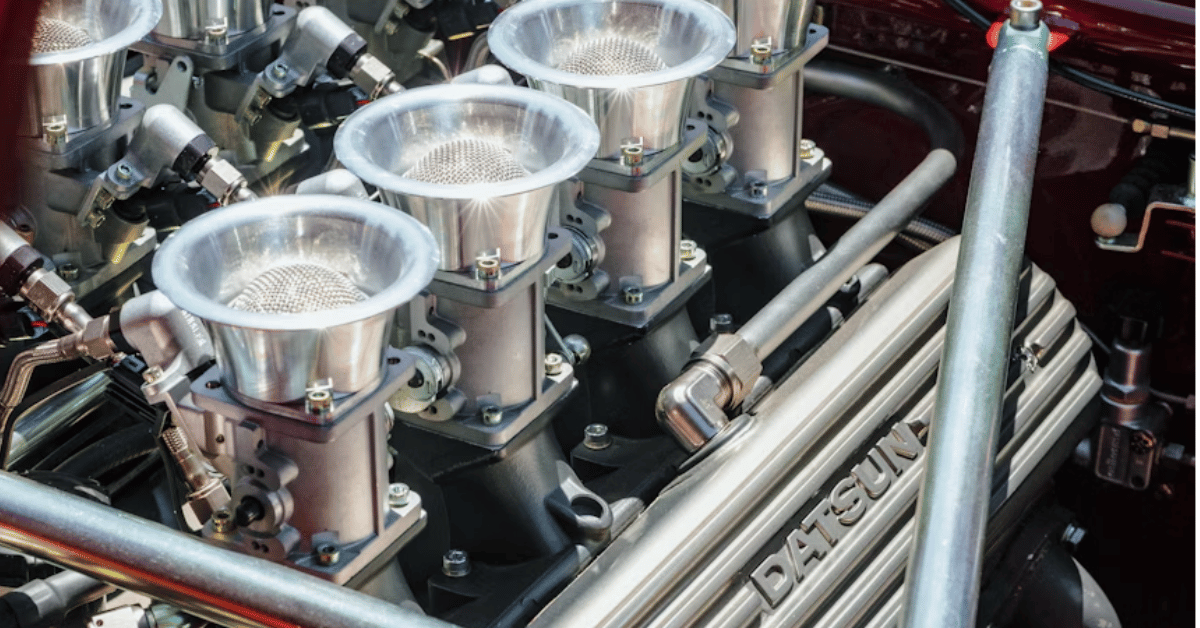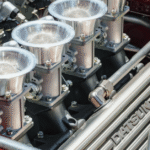The modern diesel engine is a marvel of efficiency and power, yet its performance heavily depends on one essential component: the Diesel Particulate Filter (DPF). For many car owners, the term “DPF cleaner” is synonymous with engine health, emission control, and long-term cost savings. The search for a reliable DPF cleaner begins with a simple question—how can you keep your diesel engine running smoothly while meeting today’s strict emission standards? The answer lies in understanding the science behind DPF systems and how proper cleaning prevents performance degradation and mechanical failure. Within the first 100 words, it’s clear that DPF cleaner is not just a maintenance product—it’s a necessity for every diesel vehicle that aims to remain efficient, compliant, and powerful. This article explores how DPF cleaners work, their types, application methods, and the future of cleaner diesel technology, offering detailed insights that blend technical understanding with practical guidance.
Understanding the DPF System and Its Importance
A Diesel Particulate Filter (DPF) is designed to capture soot and ash particles emitted from diesel exhaust systems, preventing them from releasing into the atmosphere. The buildup of these particles over time leads to clogging, reduced engine performance, and increased fuel consumption. The DPF cleaner serves as the essential maintenance solution that restores the filter’s efficiency without replacing the entire unit. This cleaning process can be chemical, thermal, or mechanical, depending on the condition of the filter and the type of vehicle. Modern vehicles rely on a balance of automated regeneration cycles and manual DPF cleaning treatments, ensuring consistent airflow and optimized combustion. Without regular cleaning, the DPF can reach a saturation point that triggers warning lights, reduced acceleration, or even limp-mode conditions, emphasizing the importance of proper DPF care.
How DPF Cleaners Work Inside Diesel Engines
The core function of a DPF cleaner is to dissolve and burn off accumulated soot and carbon residues within the filter’s honeycomb structure. When introduced into the system, these cleaners react chemically with trapped particulates, reducing their ignition temperature and promoting complete combustion during the regeneration process. The result is a clear exhaust path and restored pressure balance across the engine. Some cleaners are designed as fuel additives, while others are spray-based solutions for direct filter application. The internal reaction involves oxidation catalysts that convert harmful soot into less harmful carbon dioxide, which is then expelled safely. The process reduces harmful emissions, enhances fuel efficiency, and extends the lifespan of the diesel particulate filter. By improving the regeneration cycle’s efficiency, DPF cleaners also contribute to smoother engine performance and reduced maintenance downtime.
Types of DPF Cleaners and Their Applications
DPF cleaners can be classified into several main categories based on their method of use and chemical composition. Fuel additive cleaners are the most common, added directly to the fuel tank to promote on-road regeneration. Spray-based cleaners are used during off-vehicle maintenance, requiring the removal of the filter for direct cleaning. Thermal regeneration cleaners use high heat to burn soot deposits, while professional fluid treatments use advanced catalysts for faster results. The ideal DPF cleaner depends on factors like vehicle type, driving habits, and emission control requirements. Fleet operators often rely on industrial-grade DPF cleaning stations, while individual car owners may use chemical-based additives for preventive maintenance.
Table 1: Comparison of DPF Cleaner Types and Their Benefits
| Type of DPF Cleaner | Application Method | Cleaning Efficiency | Suitable For | Average Cost Range |
|---|---|---|---|---|
| Fuel Additive Cleaner | Mixed with fuel | Moderate | Daily drivers | $10–$25 |
| Spray Cleaner | Direct filter application | High | Service centers | $20–$40 |
| Thermal Cleaning | Heat-based process | Very High | Heavy vehicles | $50–$100 |
| Ultrasonic Cleaning | Advanced vibration cleaning | Excellent | Industrial fleets | $80–$150 |
Signs That Indicate You Need a DPF Cleaner
Every diesel vehicle provides warning signals before a complete DPF blockage occurs. Common symptoms include reduced fuel economy, loss of power, and a check-engine or DPF warning light. Exhaust smoke color can also change, often turning darker due to incomplete combustion. In many modern vehicles, drivers may experience frequent forced regenerations or unusual engine noise when soot levels become excessive. Ignoring these signs can lead to increased exhaust backpressure, damaging the turbocharger and exhaust manifold. A timely DPF cleaning can prevent costly repairs and maintain optimal emissions performance. Drivers who frequently operate in urban environments are especially at risk due to shorter drive cycles that prevent full regeneration, making chemical DPF cleaners a valuable preventive measure.
The Science Behind Chemical Composition of DPF Cleaners
Modern DPF cleaners are engineered using sophisticated chemical compounds that balance cleaning power with environmental safety. These formulations typically contain metal-organic catalysts, detergents, and combustion promoters that work in synergy. When injected into the fuel or sprayed directly, they target unburned hydrocarbons and carbon soot at a molecular level. The oxidation process converts solid particulates into gaseous emissions, reducing the filter’s soot load. Some advanced DPF cleaners also incorporate nanotechnology elements that leave a thin protective film, reducing future buildup. The result is a cleaner, longer-lasting DPF with reduced risk of thermal stress. Research in green chemistry has further improved these products, ensuring lower toxicity and compatibility with modern diesel engines that use sensitive emission sensors.
Preventive Maintenance Using DPF Cleaners
Preventive DPF maintenance can extend the life of the filter beyond 150,000 miles. Regular use of fuel-based DPF cleaners—typically every 3,000 to 5,000 miles—keeps soot levels manageable. For vehicles with high idling times, an interval of every 2,000 miles may be more suitable. In professional maintenance routines, workshops often pair DPF cleaning with EGR (Exhaust Gas Recirculation) system checks to ensure overall exhaust efficiency. Temperature sensors, pressure sensors, and catalytic converters should be inspected during every cleaning cycle. Using high-quality low-ash engine oils and premium fuel can further support cleaner combustion. As one automotive engineer noted, “A DPF cleaner is not a quick fix—it’s an investment in long-term engine health.” This preventive approach not only saves costs but contributes to cleaner air and reduced carbon footprints.
DPF Cleaner Usage: Step-by-Step Application Guide
The process of applying a DPF cleaner depends on its type. For fuel additives, the cleaner is poured directly into the fuel tank before refueling to ensure proper mixture. As the engine operates, the cleaner circulates through the combustion system, lowering soot ignition temperatures. Spray-based cleaners, on the other hand, require removal of temperature sensors and direct application into the DPF inlet using a specialized nozzle. The cleaner must be allowed to soak for about 20 minutes before the engine is restarted to initiate the regeneration phase. Thermal cleaning methods, often used in workshops, involve controlled heating of the filter to around 600°C to burn off soot residues. Each of these methods requires precision, as improper cleaning can damage sensors or reduce catalytic efficiency.
Table 2: DPF Cleaning Frequency and Recommended Practices
| Vehicle Type | Driving Conditions | Cleaning Interval | Cleaner Type | Expected Filter Life |
|---|---|---|---|---|
| Passenger Car | Mixed urban & highway | Every 5,000 miles | Fuel additive | 120,000 miles |
| Delivery Van | City driving | Every 3,000 miles | Chemical spray | 100,000 miles |
| Heavy Truck | Long haul routes | Every 7,000 miles | Thermal method | 180,000 miles |
| Industrial Fleet | Continuous use | Monthly | Ultrasonic cleaning | 200,000 miles |
Environmental and Economic Benefits of DPF Cleaners
DPF cleaners offer significant environmental benefits by ensuring diesel engines emit fewer particulates and harmful gases. When soot accumulates in the filter, the engine burns more fuel, releasing excess carbon dioxide. Cleaning the DPF restores combustion balance and lowers total emissions. Economically, regular cleaning avoids the high cost of filter replacement, which can exceed $1,500 for certain models. Fleet operators save thousands annually by implementing scheduled DPF maintenance programs. As environmental policies tighten, efficient DPF cleaning has become not only a maintenance task but a regulatory necessity. Cleaner exhaust systems also mean longer-lasting engines, improved fuel efficiency, and enhanced resale value. As one environmental researcher stated, “DPF cleaners bridge the gap between mechanical necessity and ecological responsibility.”
Innovations in DPF Cleaner Technology
Recent innovations in DPF cleaner technology have led to hybrid solutions that combine chemical and mechanical cleaning principles. Smart cleaning fluids now contain adaptive compounds that adjust their reaction based on soot density and temperature. Ultrasonic cleaning machines use high-frequency sound waves to dislodge micro-particles from filter walls without physical contact. Additionally, digital diagnostic systems can measure backpressure and suggest optimal cleaning intervals. Some new diesel vehicles even come equipped with self-cleaning DPFs using advanced regeneration algorithms, reducing manual intervention. These innovations demonstrate a clear trend toward sustainability and efficiency, where cleaner combustion and reduced emissions are technologically intertwined. The automotive industry continues to invest in research to develop DPF cleaners that meet future emission norms without compromising performance.
Common Myths and Misconceptions About DPF Cleaning
Despite its importance, DPF cleaning is often misunderstood by many diesel owners. One of the most common myths is that DPF cleaners can permanently fix a severely clogged filter. In reality, while they can improve performance, filters that are completely blocked require professional or thermal cleaning. Another misconception is that frequent highway driving eliminates the need for cleaners entirely. Though highway driving aids regeneration, it does not remove non-combustible ash residues. Some drivers also assume that using any additive works for DPF maintenance, but only specialized cleaners designed for DPF systems are safe. Understanding these nuances prevents costly errors and ensures the long-term reliability of the exhaust system.
Professional DPF Cleaning Services: What to Expect
Professional DPF cleaning services provide a comprehensive approach that combines diagnostic analysis, physical cleaning, and performance testing. Technicians first assess backpressure readings to determine soot load levels. The DPF is then removed and subjected to air pulse or thermal regeneration, followed by an inspection using endoscopic tools. After cleaning, flow tests are performed to confirm efficiency recovery. Most workshops also provide a service report with pre- and post-cleaning data, ensuring transparency. While professional services cost more upfront, they guarantee optimal results, particularly for commercial fleets or heavily used vehicles. “Cleaning the DPF professionally at least once a year can be the difference between engine longevity and early replacement,” noted one leading mechanic.
DPF Cleaner Safety and Handling Guidelines
DPF cleaners contain potent chemicals and should always be handled with care. Users should wear gloves and safety goggles during application to prevent skin and eye irritation. Ensure the vehicle is parked in a well-ventilated area when using aerosol or spray-based cleaners. Always follow manufacturer instructions, avoiding overuse, which can affect sensor calibration. Fuel additive cleaners should never be mixed with other fuel treatments, as this can cause chemical imbalance. Proper disposal of used DPF cleaning solutions is also crucial to prevent environmental contamination. Following these safety protocols guarantees effective cleaning without risking mechanical or health hazards.
The Future of DPF Cleaning in a Sustainable World
As diesel technology evolves, the DPF system’s role will remain pivotal in balancing performance with environmental responsibility. Future DPF cleaners are expected to incorporate bio-based solvents and smart sensors that monitor soot levels in real-time. With the transition toward low-emission zones and greener mobility standards, maintaining an efficient DPF system will be non-negotiable. Hybrid and plug-in diesel-electric systems may also integrate automated DPF maintenance cycles, further simplifying upkeep. The continued innovation in cleaning chemistry and digital monitoring tools ensures that DPF cleaners will remain at the forefront of sustainable automotive care for decades to come.
Conclusion
The role of a DPF cleaner extends far beyond routine vehicle maintenance—it represents the intersection of performance, sustainability, and responsible ownership. A clean DPF ensures optimal fuel efficiency, reduced emissions, and extended engine life. Whether used as a preventive additive or through professional servicing, DPF cleaning remains essential for every diesel owner who values long-term performance. The evolution of DPF cleaner technology mirrors the broader shift toward cleaner energy and sustainable engineering. In essence, a well-maintained DPF not only benefits the driver but also the environment we share. “Every clean filter is a small victory for the air we breathe,” as one environmental engineer aptly remarked.
FAQs
1. How often should I use a DPF cleaner?
It’s recommended to use a fuel-based DPF cleaner every 3,000 to 5,000 miles, depending on driving conditions and vehicle type.
2. Can I use a DPF cleaner in all diesel engines?
Most modern DPF cleaners are safe for all diesel vehicles equipped with particulate filters, but always confirm compatibility with your vehicle manual.
3. Is professional DPF cleaning better than DIY methods?
Yes, professional cleaning offers a deeper restoration process using specialized equipment, ideal for heavily clogged filters or commercial fleets.
4. Does using a DPF cleaner improve fuel economy?
Yes, clean filters reduce exhaust backpressure, allowing smoother airflow and better combustion, which directly enhances fuel efficiency.
5. Are DPF cleaners environmentally safe?
Modern DPF cleaners use low-toxicity, eco-friendly formulas designed to meet current environmental regulations without harming emission sensors.











